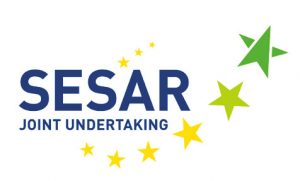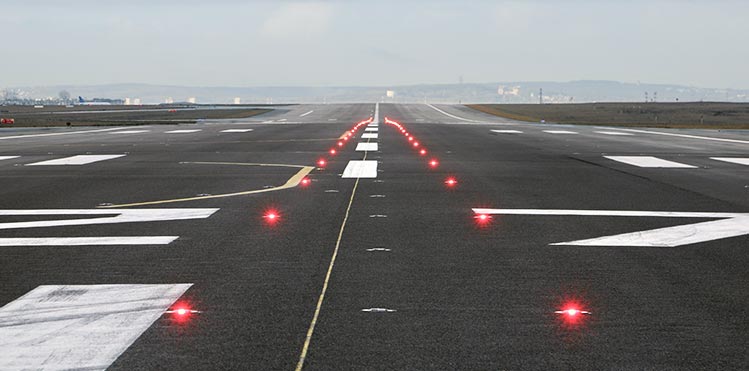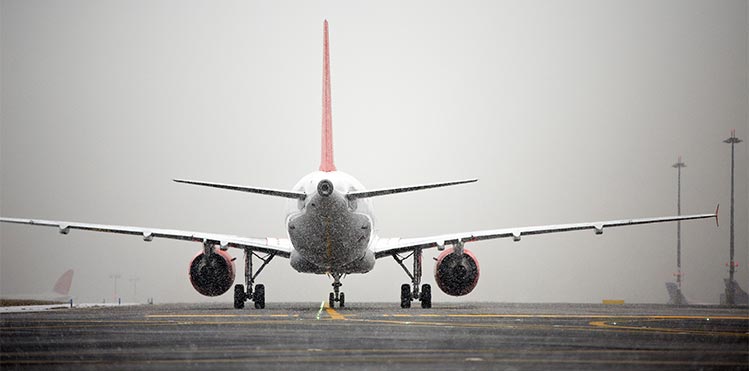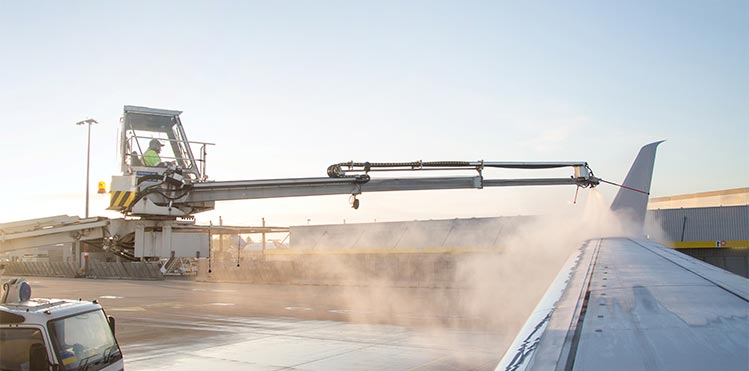Airports around Europe are preparing for the winter season and the bad weather it can so often bring. Snow, low cloud and foggy conditions, not to mention high winds and stormy weather, can cause serious disruption to flight schedules and airport operations across the continent. SESAR, the EU’s flagship programme for modernising air traffic management, has delivered a number of solutions which are helping airports to safely maintain their capacity and runway throughput even in wintry or low-visibility conditions. This article provides an overview of just some of them.
Keeping the tarmac safe
Today, vehicle drivers rely on procedures based on the “see and avoid” principle to get around the airport safely. These conventional visual-based procedures work well when the drivers have good visibility of the runways and taxiways, but they are less effective at night or in foggy and low-visibility conditions. The SESAR designed system improves the driver’s situational awareness and issues alerts in situations where there is a risk of collision or infringement in a restricted or closed area. The system can be installed as a separate physical display in the vehicle or as an integrated application, and has several innovative functionalities. The system offers in real-time vehicle drivers with an unprecedented display of all the surrounding traffic such as aircraft, towed aircraft and other vehicles.
 SESAR Solution Catalogue
SESAR Solution Catalogue
The SESAR Solution Catalogue provides an overview of the new or improved operational procedures or technologies so far delivered by SESAR to modernise the European and global ATM system. Each solution includes a range of documentation, including technical specifications, safety, performance and interoperability requirements, as well as regulatory recommendations, and human and environmental performance reports. The first edition of SESAR Solutions catalogue contains 63 Solutions, of which 24 are being deployed across Europe simultaneously (Pilot Common Project).
Preventing runway incursions
Runway Status Lights (RWSL) is a fully automatic, advisory safety system designed to reduce the number and severity of runway incursions and thus prevent runway accidents while not interfering with airport operations. The RWSL increases pilots and vehicle operators’ situational awareness by directly providing runway occupancy status through the autonomous illumination of in-pavement lights on runway and taxiways. This is particularly useful during winter when the situational awareness may be reduced. The concept of operations relies on the ability to warn at least one of the aircraft or vehicles in a conflicting scenario and, in some cases, provides additional warnings to everyone involved for increased safety. It is estimated that between 50% to 70% reduction of the most serious runway incursion occurrences can be expected thanks to this system. The solution is now implemented at Paris Charles de Gaulle Airport.
More efficient and safer taxi operations
By linking the lighting infrastructure with the taxi route management system, the “Follow the Greens” solution (also known as “guidance assistance through airfield ground lighting”) can provide a clear route for the flight crew and vehicle driver to follow during night and reduced visibility conditions. To achieve this, taxiway centre line lights are automatically and progressively switched on in segments (or individually) as the aircraft (or the vehicle) moves along its assigned route. Pilots and vehicle drivers receive a single instruction to ‘follow-the-greens’ from air traffic control. Specifically, it offers flight crew visual cues with which to navigate the airport rather than complex taxi clearances and maps as in current operations. The solution also decreases the number of instructions given by controllers, who also have a much better awareness of the traffic situation thanks to the additional information displayed on their working position. This increased situational awareness both in the tower and cockpit increases safety, particularly in adverse weather and low-visibility conditions. In addition, surface operations become more predictable as mobiles can taxi with increased and more regular taxi speeds, thus allowing a more accurate prediction of the taxi phase. This has a positive knock-on effect on emissions and fuel burn since flight crew can taxi with greater confidence, resulting in more constant speeds and fewer stops.

Runway Status Lights (RWSL) is a fully automatic, advisory safety system designed to reduce the number and severity of runway incursions and thus prevent runway accidents while not interfering with airport operations. Copyright: DSNA
Landing in low visibility
For more than 50 years, airports around Europe have relied on instrument landing systems (ILS) to provide pilots with approach and landing guidance in low-visibility conditions. Although the system has proved to be reliable and functional, ILS is costly to maintain and has operational limitations that reduce runway capacity in certain conditions. SESAR is using ground-based augmentation of satellite navigation systems (GBAS) to improve airport resilience and capacity in such conditions. The system uses four or more global navigation satellite system (GNSS) reference receivers and a VHF broadcast transmitter. Its ground systems receive positioning data from GNSS satellites, and compute error corrections based on signal quality and known fixed positions of the GNSS reference receivers. This, in turn, is broadcast to all GNSS landing system (GLS)-equipped aircraft within range. The system produces digitally-coded broadcasts which are then loaded into the aircraft’s navigation and guidance capabilities, allowing it to land automatically in low visibility conditions. In March 2017, Frankfurt Airport became the first airport in the world to fully implement GBAS precision-landings on all three of its runways.

By linking the lighting infrastructure with the taxi route management system, the “follow the greens” solution (also known as “guidance assistance through airfield ground lighting”) can provide a clear route for the flight crew and vehicle driver to follow during night and reduced visibility conditions. Copyright: Shutterstock.com/Jaromir Chalabala
Maintaining capacity in strong headwind conditions
Today, aircraft making their final approach to land are obliged to maintain minimum separation distances. These distances are fixed whatever the wind conditions. When keeping to these distances in strong headwinds longer gaps of time develop between aircraft. This means fewer flights landing per hour (reduced airport capacity), leading to delays and increased holding at busy times, which results in increased fuel burn. SESAR’s time-based separation (TBS) replaces current distance separations with time intervals in order to adapt to weather conditions. It provides consistent time-based spacing between arriving aircraft in order to maintain runway approach capacity. TBS entered into full-time service at London-Heathrow in March 2015 and recorded 25,000 minutes of delay saved in November of that year alone. The solution is due for synchronised deployment across Europe in accordance with the Pilot Common Project.
Staying ahead of the weather
Sharing weather information and its integration within the air traffic management decision-making process enables airspace users, airports and air navigation service providers to stay up to date with the latest weather situation, and to plan accordingly and effectively. SESAR has developed a mechanism by which meteorological data generated by European meteorological agencies can be seamlessly integrated into aeronautical information service provision. This four-dimensional (4D) weather cube (4DWxCube) is a (virtual) repository of shared consistent and translated meteorological information, produced by multiple meteorological service providers (METSPs) and made available to airspace management stakeholders via its system-wide information management (SWIM) compliant MET-GATE. The solution is due for synchronised deployment across Europe in accordance with the Pilot Common Project.
More predictable de-icing operations
The SESAR de-icing management tool (DMIT) refers to a system capable of improving the predictability of aircraft de-icing operations at European airports by taking data inputs from meteorological service providers and involving the relevant airport stakeholders. The solution increases the accuracy of information related to when the procedure is going to take place, how long it will take and when the aircraft will be ready to taxi for departure, which is currently calculated by predetermined estimates. The solution means that air traffic controllers, airport operators and flight crew no longer need to work without situational awareness of de-icing activities and needing to make their own estimates of when aircraft are ready for departure. The solution envisages that de-icing operations are not systematically considered as adverse conditions anymore, i.e. a state that is in need of collaborative recovery procedures, but rather a part of normal operations in the winter period.

The SESAR de-icing management tool (DMIT) refers to a system capable of improving the predictability of aircraft de-icing operations at European airports by taking data inputs from meteorological service providers and involving the relevant airport stakeholders. Copyright: Melanie Braun
Weathering future airport operations
With SESAR 2020, the next wave of research and development activities are underway, which will further develop some of the solutions listed to improve safety, efficiency and resilience of airside operations, particularly during low visibility and adverse weather conditions. These will include more advanced safety nets for tower controllers and flight crew at the airport, enhanced guidance and routing solutions on the surface and improved runway management tools, which should be ready for deployment in the coming years. Looking towards the long-term future, SESAR researchers are also looking at how to harness emerging technologies, such as augmented and virtual reality in the management of air traffic on and around airports no matter what the weather conditions.







